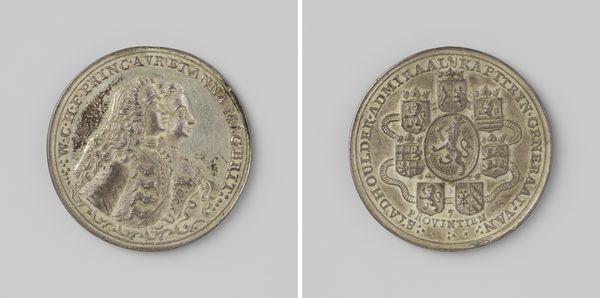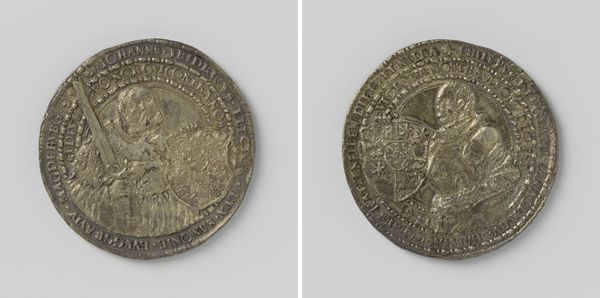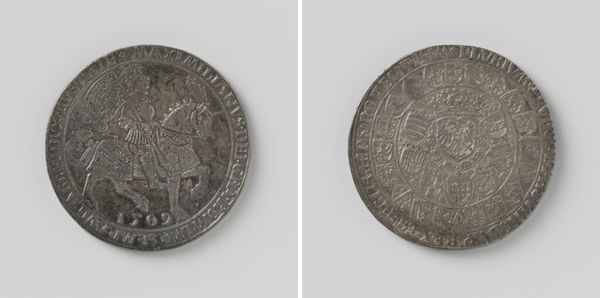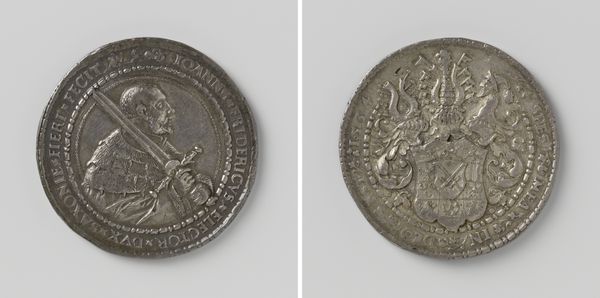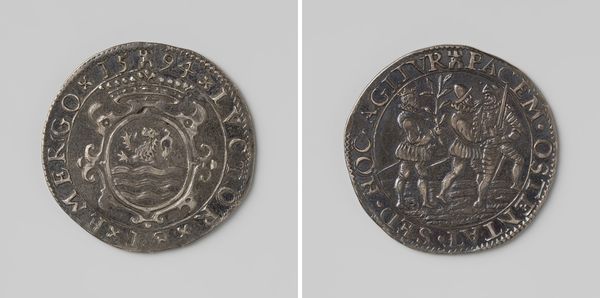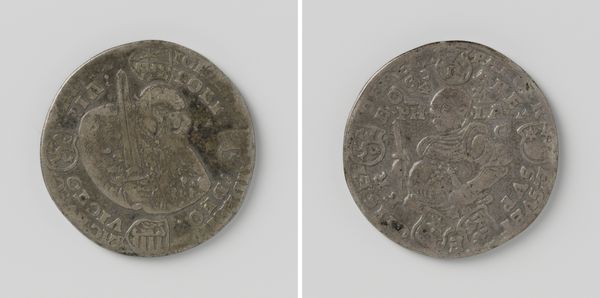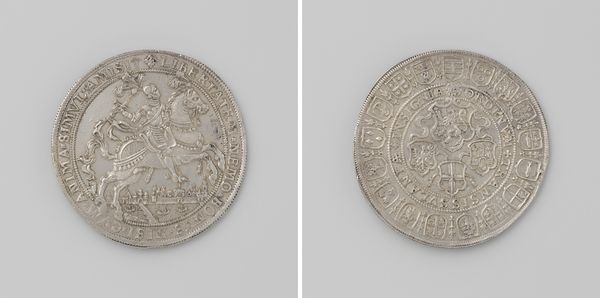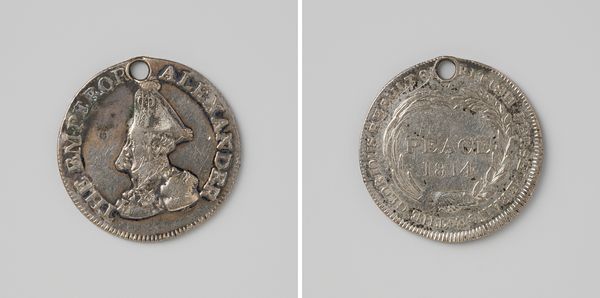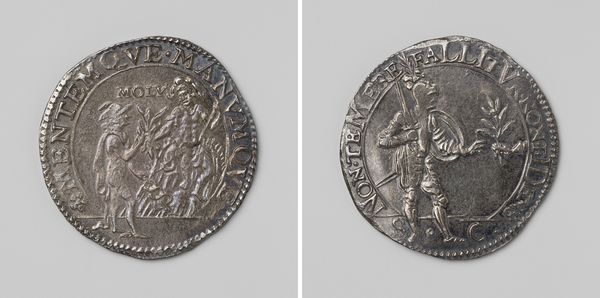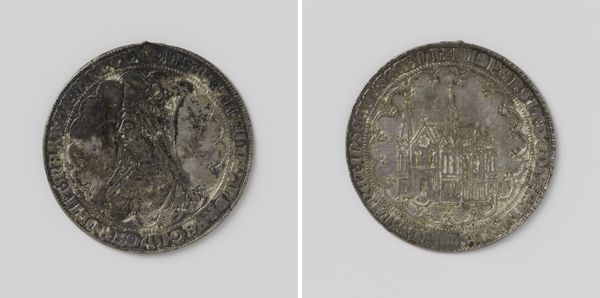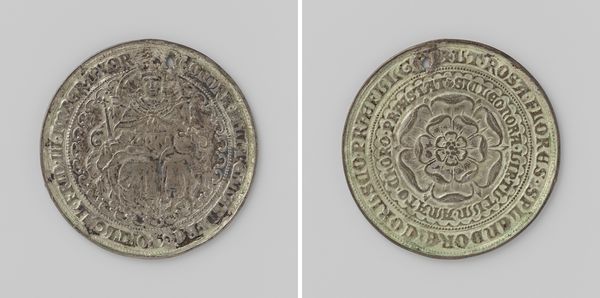
metal, sculpture, engraving
#
portrait
#
decorative element
#
medieval
#
metal
#
11_renaissance
#
sculpture
#
history-painting
#
italian-renaissance
#
engraving
Dimensions: diameter 3.6 cm, weight 16.22 gr
Copyright: Rijks Museum: Open Domain
Editor: This is a half taler coin depicting Sigismund, Archduke of Tyrol, dating back to 1484. It’s crafted from metal, giving it a sturdy, weighty feel, I imagine. What strikes me most is how both sides of the coin feature circular compositions—one with a portrait, the other with a knight on horseback. What do you make of this design? Curator: The circular composition, rendered in precise engraving, offers a bounded field for symbolic representation. Note how the portrait employs strict profile and textual circumscription to convey authority, while the equestrian image emphasizes martial prowess within its own decorative ring. Consider how the contrasting textures achieved within a single metallic medium – the smoothness of the portrait versus the intricate detailing of the horse and rider – generate visual interest. What relationship, therefore, do you perceive between these two compositional approaches? Editor: I see what you mean. The portrait seems formal and controlled, while the knight scene is much more dynamic, even though they are both bound by the circular shape. The textures create an appealing contrast. So, do you think the artist intentionally chose to show these two sides of Sigismund, as a ruler and as a warrior? Curator: Precisely. This interplay exposes the dualistic aspects of power. Furthermore, the use of metal is integral. Its inherent durability echoes the enduring quality of rulership and historical record. Note, too, the inscription surrounding the portrait—it anchors the image, framing the subject within a web of authority. Observe the level of detail. Editor: It's fascinating to consider how the artist employed shape, texture, and line to tell a story. The design feels like it compresses different types of information. Curator: Indeed. By considering these compositional elements, we appreciate how formal constraints can actually amplify an artwork’s capacity for expressive and historical meaning. Editor: I’ve certainly gained a new appreciation for how the intrinsic elements shape a piece of art. Thank you.
Comments
No comments
Be the first to comment and join the conversation on the ultimate creative platform.
